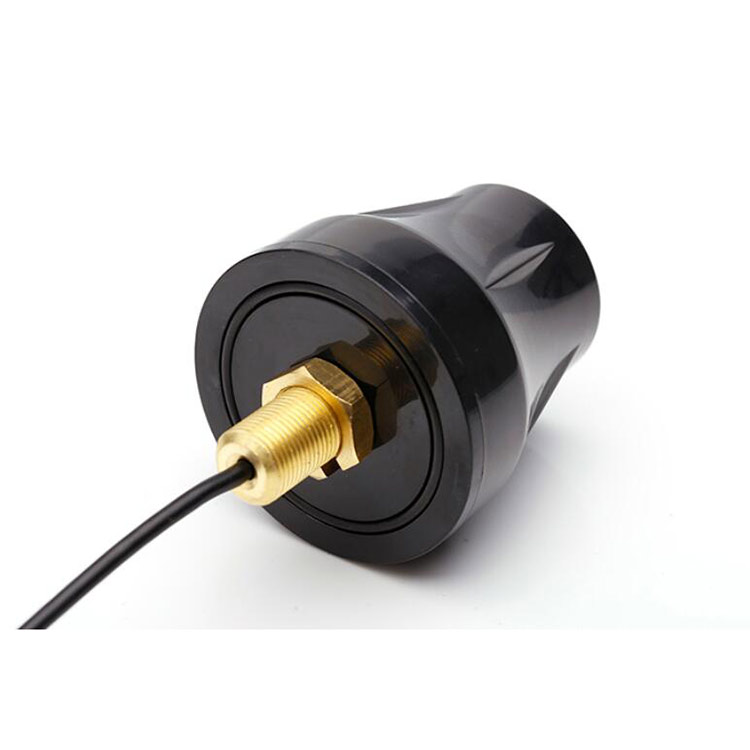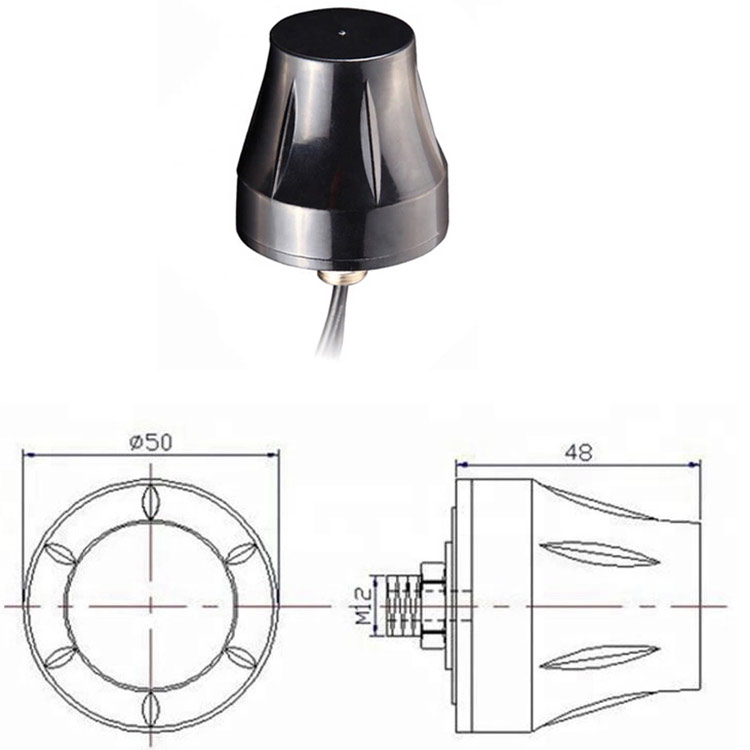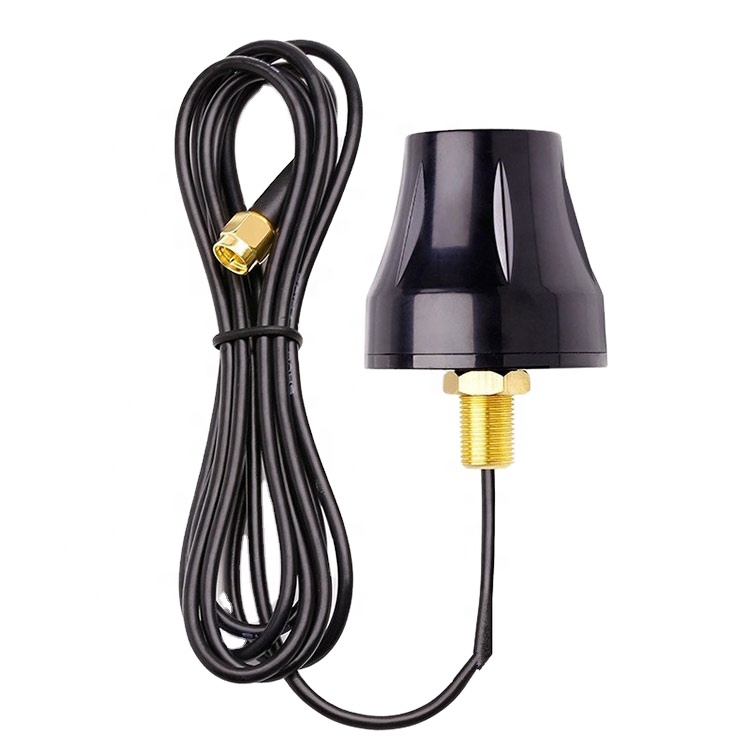The robustness and high performance of industrial screw mount waterproof GPS antennas make them indispensable across a vast spectrum of industries. Their application is wherever reliable positioning, navigation, or timing is mission-critical and the environment is unforgiving.
Key Applications:
Precision Agriculture: This is a prime example. GPS antennas are mounted on tractors, combines, and sprayers to enable auto-steering and sub-inch repeatable accuracy. This allows for practices like variable rate seeding and fertilizing, reducing waste, increasing yield, and reducing operator fatigue. The antennas must withstand constant vibration, dust, and chemical exposure.
Marine and Offshore: On vessels, from small fishing boats to massive container ships, these antennas are used for chart plotting, automatic identification systems (AIS), and radar overlay. They face extreme conditions: constant saltwater spray, high humidity, and violent motion. IP68/IP69K ratings are mandatory.
Heavy Equipment and Mining: In mining operations, enormous haul trucks, excavators, and bulldozers use GPS for fleet management, payload monitoring, and autonomous operation. The environment is brutal, with extreme dust, vibration, and shock. The antennas are crucial for collision avoidance and optimizing digging and hauling routes.
Surveying and Mapping: Survey-grade GNSS systems, which can achieve centimeter-level accuracy using Real-Time Kinematic (RTK) or Post-Processing techniques, rely on high-performance antennas. The antenna's phase center must be extremely stable and well-defined to ensure measurement precision. They are mounted on poles, tripods, and drones for aerial mapping.
Transportation and Logistics: Fleet management systems for trucks and buses use them for real-time tracking, route optimization, and driver behavior monitoring. They are also integral to railway control systems and container tracking in ports.
Timing and Synchronization: Many critical infrastructures rely on GPS not for location, but for precise time. The GPS signal contains a highly accurate time reference traceable to atomic clocks. Industrial GPS antennas are used to synchronize telecommunications networks (e.g., for 4G/5G base stations), electrical power grids, and financial trading networks where microsecond timing is essential.
Public Safety and Defense: Police, fire, and emergency services vehicles use them for dispatch and navigation. In defense, they are used for vehicle and soldier tracking, and for guiding unmanned aerial and ground vehicles (UAVs/UGVs).
Future Trends:
Multi-Band and Multi-Constellation Becomes Standard: Future antennas will seamlessly support all signals from all constellations across multiple frequency bands (L1, L2, L5, etc.). This "everything" capability provides maximum robustness, faster integer ambiguity resolution for RTK, and better resistance to ionospheric errors.
Integrated Inertial Navigation Systems (INS): We will see more antennas with built-in inertial measurement units (IMUs) like gyroscopes and accelerometers. This creates a deeply integrated GNSS/INS system in a single housing. When GNSS signal is lost (e.g., in tunnels, urban canyons), the INS takes over, providing continuous and accurate position, velocity, and attitude (roll, pitch, yaw) data.
Advanced Multipath Mitigation: New antenna element designs, such as controlled reception pattern antennas (CRPAs) or arrays with adaptive processing, will become more accessible. These can actively null out interfering or multipath signals, providing unparalleled performance in highly reflective environments like downtown urban cores.
Enhanced Robustness and Cybersecurity: As systems become more autonomous, the antenna's physical and cyber resilience will be paramount. Designs will focus on even greater resistance to jamming (intentional or unintentional interference) and spoofing (malicious fake GPS signals). This may involve integrated jamming detection and reporting features.
Miniaturization and Modularity: Despite their rugged nature, there will be a push for smaller, lighter form factors without sacrificing performance, especially for UAV and portable applications. We may also see more modular designs where the LNA or filters can be user-replaced or upgraded.
Smart Antennas and IoT Integration: Antennas will evolve from simple signal-capturing devices into smarter peripherals. They may include built-in data loggers, health monitoring sensors (reporting their own status), and standardized digital interfaces for easier integration into the Internet of Things (IoT) ecosystems.
The future of the industrial screw mount antenna is one of greater integration, intelligence, and resilience, continuing to serve as the foundational sensor for an ever-expanding world of automated and precise industrial applications.
Conclusion
The industrial screw mount waterproof GPS antenna is a masterpiece of focused engineering that transcends its simple appearance. It is far more than a mere accessory; it is the critical, and often determinative, front-end of any high-performance GNSS system operating outside a laboratory environment. This series has detailed its role as the robust interface between the vast, invisible network of satellites and the sophisticated digital receivers that calculate position and time.
Its value is derived from the meticulous synthesis of multiple disciplines: electromagnetic theory to design the efficient patch element, electronic engineering to create the ultra-low-noise amplifier, materials science to select UV-stable and RF-transparent compounds, and mechanical engineering to achieve an impenetrable environmental seal. The screw mount is not merely a fastener but the foundation of its electrical performance, enabling the stable ground plane essential for its optimal hemispherical radiation pattern and multipath rejection.
The advantages are clear and compelling. In a world demanding ever-greater precision, reliability, and automation, these antennas deliver unparalleled durability, signal integrity, and resistance to environmental and RF challenges. They enable the centimeter-level accuracy required for autonomous farming and construction machinery, the unwavering reliability needed for marine navigation and network timing, and the ruggedness to survive the punishing conditions of mining and heavy transport.
However, this performance comes with considerations. The higher cost, the need for proper installation, and the dependence on a suitable ground plane are not drawbacks but rather the necessary trade-offs for achieving such a high standard of operation. They mandate a level of expertise and understanding from the system integrator.
Looking forward, the evolution of this technology is tightly coupled with the advancement of global navigation itself. As new satellite constellations come online and new signals are broadcast, the antenna must evolve to receive them. The trends point towards smarter, more integrated systems that combine positioning with inertial navigation and advanced anti-jamming capabilities, all within the same ruggedized housing.
In conclusion, the industrial screw mount waterproof GPS antenna is an indispensable link in the GNSS chain. It is the unsung hero that ensures the faint whispers from space can be heard clearly amidst the cacophony of terrestrial challenges. It is a testament to the principle that true reliability is engineered from the ground up—or, in this case, from the mount up—enabling the modern world to navigate, operate, and synchronize with ever-increasing precision and confidence.




































































 Language
Language
 En
En Cn
Cn Korean
Korean

 Home >
Home > 








 18665803017 (Macro)
18665803017 (Macro)













